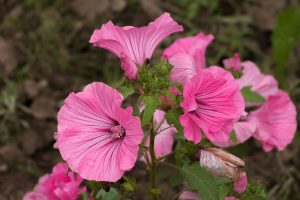Last Updated on April 15, 2024 by Real Men Sow
Deadheading plants encourages them to produce more flowers by stopping them from expending energy creating fruit and seeds.
Deadheading is beneficial for annuals, perennials, bedding, and herbaceous perennials. Some plants can be handled with a “free and easy” approach while others need more attention.
What Plants Should You Deadhead?
Lavatera
Lavateras can continue to flower if they are deadheaded before the seed heads form.
Camellia
If shrubs only bloom once a season, removing old flowers can help conserve plant resources and ensure healthy root and leaf growth. Deadhead them by taking out the old blooms.
Peonies
Peony flowers that are old and damaged can be easily identified. To prevent seeds from being produced, cut the dead flowers near the base.
 Pieris
Pieris
You can remove the flower clusters from pieris shrubs and cut back to a healthy branch. Do not deadhead too soon, as this could cause you to lose the next year’s flowers.
Hebe
Deadheading is necessary for Hebes to prolong their flowering period and improve their appearance. Reduce the number of blooms that have fallen to the base of your flower.
Buddleia
Buddleia flowers quickly become brown after they have finished their display. This gives the plant an unattractive appearance. To improve the appearance of old blooms and encourage new blooms, prune them at the base.
 Tree peonies
Tree peonies
Tree peonies can be deadheaded by removing spent blooms from their stems. This will prevent them from wasting energy and producing unneeded seeds.
Roses
Deadheading is a great way to make roses bloom. Cluster-flowered roses should be deadheaded regularly to channel the plant’s energy into producing more flower buds. Cut each flower off as the petals begin to fall.
Choisya Ternata
After flowering has ended, Deadhead Choisya Ternata. This is usually in June. To make a healthy bud, simply cut the spent flower clusters.



